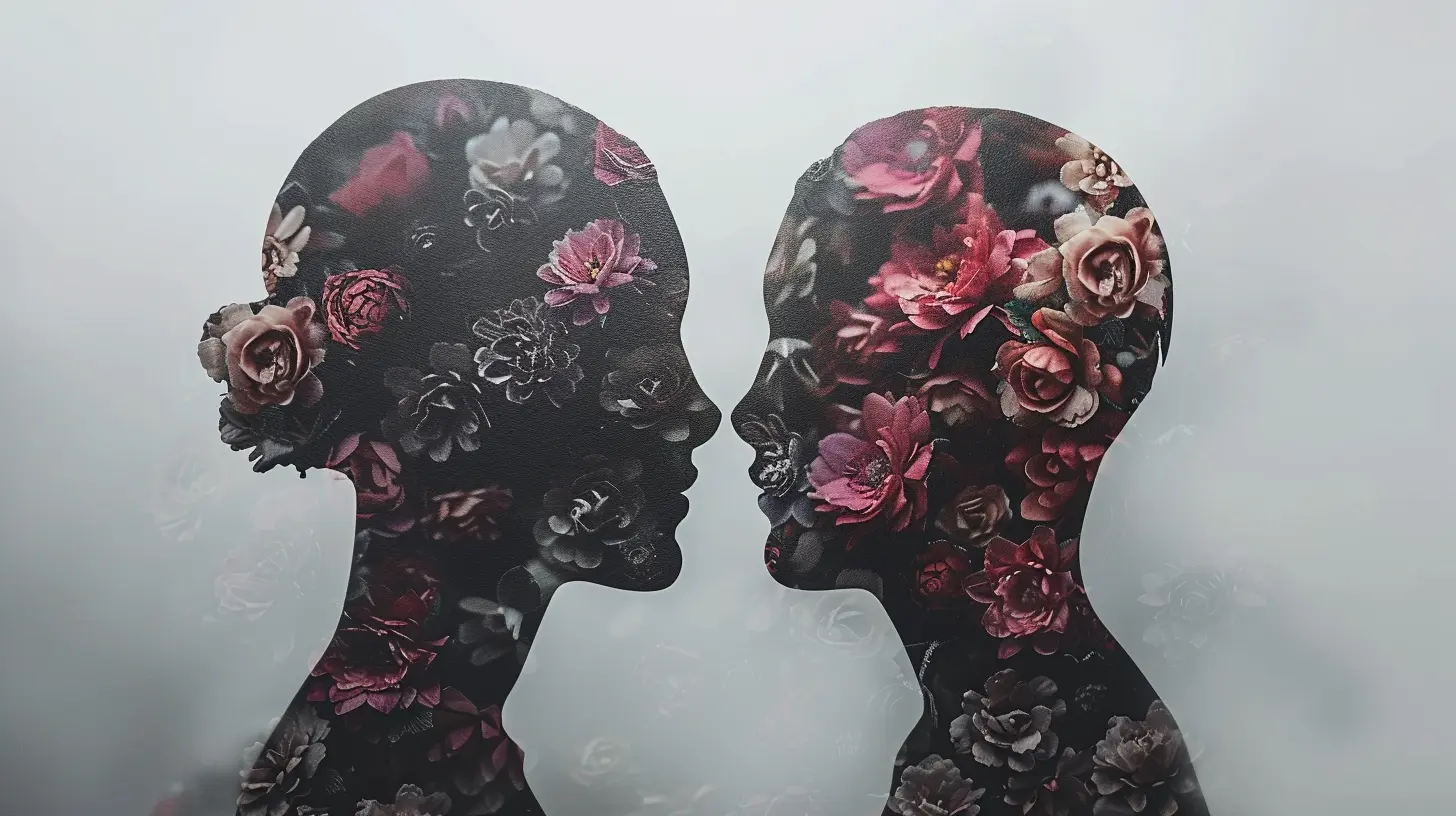The Psychology of Relationships: Attachment Styles Explained
26 September 2025
Let’s be honest—relationships can be complicated. We’ve all had that moment when we’re staring at a text message, wondering if we’re overthinking, or when we’re lying awake at night questioning why we keep choosing the same kind of partner. Sound familiar?
Well, you're not alone.
Understanding the psychology behind relationships doesn't just make you sound wise at dinner parties—it can actually help you build stronger, healthier connections. One of the most powerful tools to understand your relationship behaviors is attachment theory. Yup, this one concept can explain a lot about how we love, fight, connect, and even break up.
So, grab a cozy drink and let’s unpack the fascinating world of attachment styles—what they mean, how they shape your love life, and most importantly, how you can use this knowledge for happier, more secure relationships.
✨ What Are Attachment Styles, Anyway?
In simple terms, attachment styles are patterns of behavior we develop in our early years that affect how we relate to others, especially in romantic relationships. Think of them as your relationship "blueprint."This blueprint starts to form when you're just a baby, interacting with your primary caregivers. Based on how responsive and attentive those caregivers were, your brain developed expectations about love, closeness, and trust.
These styles don’t stay stuck in the past—oh no! They follow you into adulthood and show up in your friendships, work relationships, and especially in romantic partnerships.
🌱 The Origins: A Quick Look at Attachment Theory
Let’s take a trip back to the 1950s when a British psychologist named John Bowlby introduced the idea of attachment theory. He noticed that children who were separated from their parents responded in predictable ways—like anxiety, distress, and even detachment.Later, psychologist Mary Ainsworth expanded on this by observing babies and their reactions when their moms left and then returned. From these experiments, she identified distinct attachment styles—three main ones at first (secure, anxious, and avoidant), with a fourth one (fearful-avoidant) added later.
❤️ The Four Main Attachment Styles
Let’s break down the four attachment styles and what they might look like in real-life relationships. Don’t worry—no heavy psych lingo here. Just relatable stuff you’ll probably nod your head over.1. Secure Attachment – "I’m Good, You’re Good"
Traits:- Comfortable with intimacy and independence
- Trusts others easily
- Communicates openly and effectively
- Doesn’t freak out when a partner pulls away a little
People with secure attachment grew up with caregivers who were responsive, affectionate, and reliable. As adults, they're like the emotional rockstars of relationships. They don’t play games, and they don’t freak out when things get serious. They're not too clingy, not too distant—just right.
Real-life example: Ever met someone who’s just... easy to be with? No drama, no emotional rollercoasters. They make you feel safe and seen. Chances are, they’ve got a secure attachment style.
2. Anxious Attachment – "Please Don’t Leave Me"
Traits:- Craves closeness and validation
- Worries a lot about the relationship
- Sensitive to signs of rejection
- Often feels not ‘good enough’
This style often comes from inconsistent caregiving—sometimes the caregiver was warm and loving, other times distant or distracted. As a result, anxious types grow up feeling unsure they'll be loved consistently, so they cling and overthink.
Real-life example: If you tend to text multiple times when your partner doesn’t respond, or feel your heart drop when they seem “off,” you might lean anxious. You want love so badly, but you're also scared it might disappear.
3. Avoidant Attachment – "I Don’t Need Anyone"
Traits:- Values independence over intimacy
- Finds it hard to trust or open up
- Feels smothered easily
- Keeps emotions tucked away
Avoidant individuals often had caregivers who were emotionally unavailable or even dismissive. So, they learned to not rely on others and to deal with stuff internally.
Real-life example: Do you feel uncomfortable when someone gets too close? Maybe you back off when things get serious. Or you're super independent—to the point of pushing people away. That’s avoidant attachment coming through.
4. Fearful-Avoidant (Disorganized) – "Come Close… No, Wait, Go Away!"
Traits:- Crave connection but fear intimacy
- Struggle with emotional regulation
- Often experience inner conflict
- History of trauma or emotional neglect
This is the trickiest one. These folks want love but are terrified of getting hurt. So, they push people away even as they long for closeness. Their early experiences might have involved abuse or significant emotional pain.
Real-life example: You might find yourself sabotaging relationships—you want it to work, yet you can’t seem to let anyone fully in. Hot and cold behaviors, emotional highs and lows... it’s exhausting.
🧠 Why Understanding Your Attachment Style Matters
Here’s the thing—your attachment style isn't just some personality quirk. It shapes nearly everything about your relationships: how you communicate, handle conflict, deal with stress, and express affection.Knowing your style (and your partner’s) can help you:
- Break toxic patterns
- Improve communication
- Build emotional intimacy
- Choose healthier relationships
- Heal emotional wounds
Think of it like getting the user manual to your emotional life. Pretty handy, right?
💬 Can Attachment Styles Change?
Absolutely. You’re not stuck with one label forever.Our attachment style can shift based on experiences, personal growth, and the quality of our relationships. For example, an anxious person might become more secure with a supportive partner. Likewise, a secure person might feel anxious if they’re with someone distant or critical.
It’s called earned secure attachment—you can build it over time with self-awareness, effort, and yes, sometimes therapy. Healing is possible.
So if you're thinking, “Oh no, I’ve got a messed-up style,” don’t panic. Awareness is the first step, and change is very, very doable.
🛠️ How to Work with Your Attachment Style
Now let’s get practical. What can you actually do to grow from this awareness?🌼 If You’re Anxious:
- Practice self-soothing: Create habits that calm your nervous system (like journaling or breathwork).- Set healthy boundaries: You don’t need to overextend to be loved.
- Communicate clearly: Ask for your needs without guilt.
- Choose partners who offer stability and consistency.
🌵 If You’re Avoidant:
- Lean into vulnerability: Open up, even when it feels risky.- Practice emotional expression: Saying “I feel hurt” isn’t weakness.
- Reflect before running: When you feel smothered, ask yourself—is it them, or your fear of closeness?
- Be gentle with yourself—learning to trust is hard but worth it.
🌪️ If You’re Fearful-Avoidant:
- Consider working with a therapist (especially if past trauma is involved).- Journal your emotional triggers and responses.
- Build relationships slowly and mindfully.
- Use grounding techniques when anxious or overwhelmed.
🤝 If You’re Secure:
- You're doing great, but don't get complacent!- Support your partner through their emotional journey
- Stay self-aware and keep communication open.
❤️ Attachment Styles in Romantic Relationships
Here’s where things get juicy.Ever wonder why you and your partner keep having the same fight again and again? Or why the more you chase, the more they pull away?
Different attachment styles can create relationship dances—and not the fun kind. For instance:
- Anxious + Avoidant often creates a “pursuer-distancer” dynamic. One clings, the other withdraws.
- Two Avoidants? Lots of independence, little intimacy.
- Two Anxious? Overwhelming but emotionally intense.
- Secure + Anyone? A grounding and healing relationship model.
Understanding these combos can give you massive insights into your relationship patterns—and how to break them if they’re not serving you.
👣 Final Thoughts: Grow with Your Style, Don’t Fight It
There’s something truly empowering about understanding your attachment style. It helps you stop viewing your emotional reactions as “crazy” or “too much.” Instead, you start to see them as patterns with a purpose—survival strategies that once protected you.But now? You’re not that helpless child anymore.
You can re-write the script. You can choose relationships that mirror the love you deserve. You can learn, grow, and thrive.
Bottom line: Relationships are a journey, not a destination. And with a little insight into your psychology, you’re already on the path toward deeper connection and emotional freedom.
So next time love feels confusing, remember—it’s not you. It’s your attachment style. But now that you know, you can choose differently.
Here’s to building relationships that feel like home.
all images in this post were generated using AI tools
Category:
PsychologyAuthor:

Gloria McVicar
Discussion
rate this article
1 comments
Rune Lewis
Fascinating insights! How do these styles influence us?
October 18, 2025 at 3:22 AM

Gloria McVicar
Thank you! Attachment styles shape how we connect with others, influencing our communication, trust, and emotional responses in relationships. Understanding them can help us foster healthier connections.


